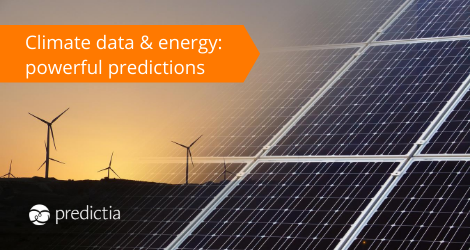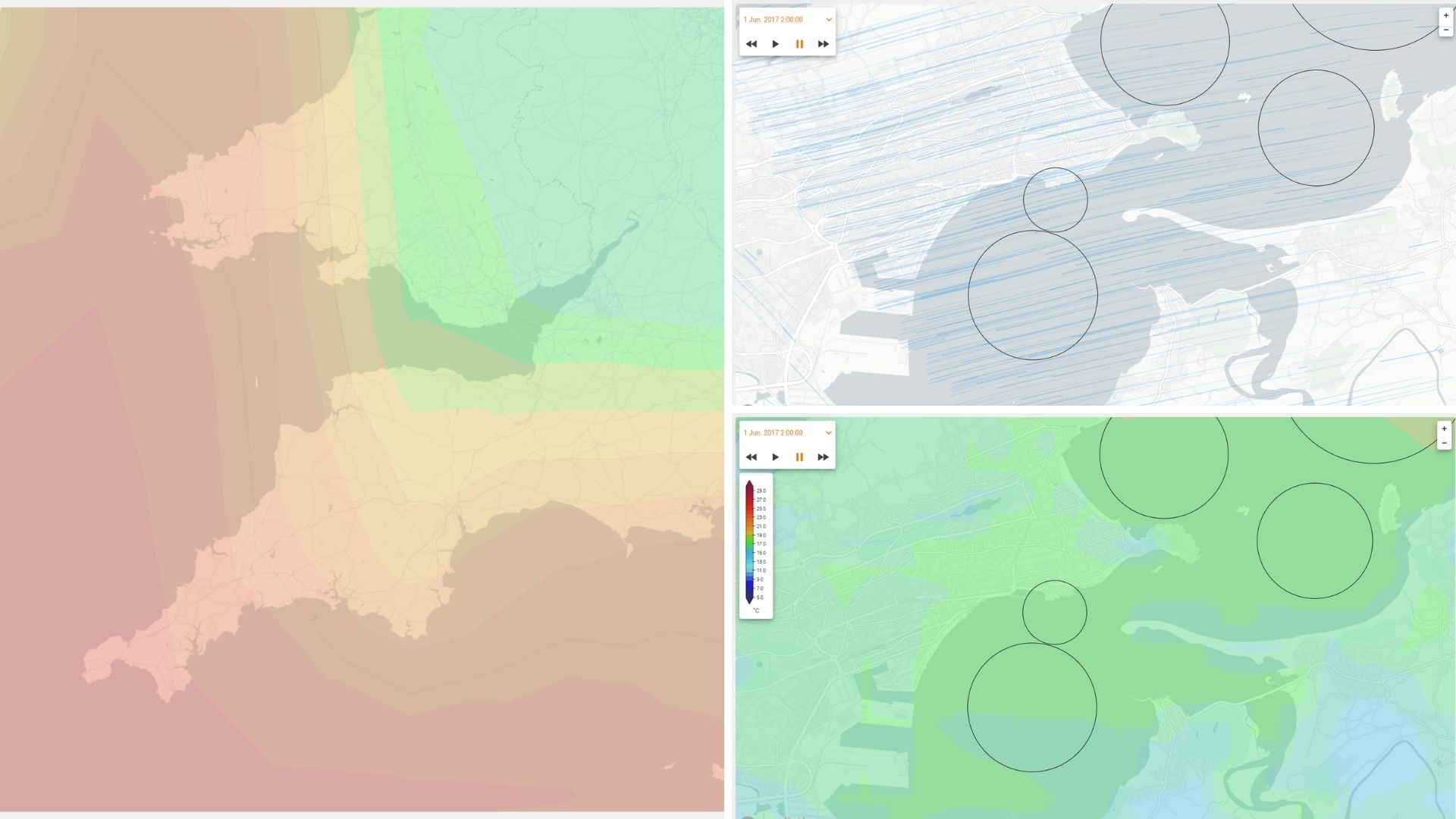Over the last 10 years, renewable energies have really taken off. Only in Europe, clean energy has stepped up from providing an 8% of the energy consumed in 2009, to 18% in 2018. In the midst of the climate emergency, the European Commission has set an ambitious objective through its Green Deal: to achieve a carbon-neutral Europe by 2050. To reach this goal, renewable energies are a double-edged sword: they need a radical increase in use, to reduce the level of emissions. At the same time, most clean energies (wind, solar and hydropower) depend highly on weather and climate conditions, which will change in the coming decades.
So in this post we want to take a look at what climate data and climate services can do for the energy sector, to make it more resilient towards climate, and help the sector reach its goals.
Short-term predictions: betting on the right weather
Among the coronavirus pandemic, you might have heard that weather betting has become a thing. From energy producers and grid managers to energy traders, for those working on renewable energies, weather is a daily bet, with much higher stakes. Both energy output & consumption is often driven by climate. And failing to estimate the energy output or demand can result in high penalties for energy producers, and risk the stability of the power grid.
Thus, having reliable weather forecasts can make a huge difference. Specially in these two cases:
- Demand & supply predictions: weather conditions play a double role. On the one hand, they drive energy consumption: higher temperatures in summer, for example, will translate into a peak in demand due to rise in air conditioning and other refrigeration needs. On the other hand, clouds, winds and other climate factors determine the amount of energy that wind and solar farms can produce. In any case, grid managers, energy producers and energy traders benefit a lot from having climate information at hand, to estimate both demand and generation levels. Working with high-resolution weather models such as WRF, we have provided tailored weather solutions to Iberdrola, to help them better estimate their energy outputs. (Need more information about these services? Drop us a line!)
- Risk management:The energy supply line is only as strong as the weakest link. From windmills and solar panels, to power lines and converter stations, all the assets in the energy chain are exposed to the elements. Extreme weather events such as flash floods, storm surges or extreme winds, while having a low probability of occurring can have devastating impact. And they are becoming more frequent and extreme due to climate change. Therefore, having reliable predictions—called subseasonal forecasts, from 10 days up to 3 months in advance—provides enough time to protect the assets in advance. To this extent, we’re part of the CAFE (Climate Advanced Forecasting of sub-seasonal Extremes) Innovative Training Network, transferring the latest, more precise results from academia to the industry, to offer reliable predictions.
Seasonal predictions: plan ahead and secure the future
Between short-term weather forecasts and long-term climate projections, lies a very interesting middle ground: subseasonal to seasonal predictions. Having mid-term information can provide very valuable insights to plan future actions. By predicting anomalous seasons for each sector, energy producers can plan maintenance activities and other operations, minimising the loss of revenue due to downtime of the infrastructure. Seasonal predictions of precipitation levels can allow hydropower managers to decide whether to release water or not, avoiding the loss of production levels. All in all, whether it is solar, wind, or hydro-power, accurate predictions over longer predictions of time ensure a better and more efficient performance. Through projects such as EUPORIAS, we have been involved in developing and refining S2S predictions for the energy sector.
Long-term projections: location, location, location!
Deciding where to place a windmill or a solar farm is no easy task. They are fixed assets that must remain profitable and efficient over the upcoming years. And as climate change makes extreme weather events more frequent and intense, having concrete estimations of their impacts is essential for risk management. But to obtain them, huge global efforts must be dedicated to develop higher resolution climate projections, like the ones developed within PRIMAVERA, a project of which we are part. They not only provide climate inputs for power system simulation. They also give us deep insights into the underlying processes driving meteorological impacts in the energy sector, like large-scale teleconnections influencing the European, eddy-driven jet variability, storms and blocking. If you want to know more, explore its results in the Data Viewer we developed for the project.


